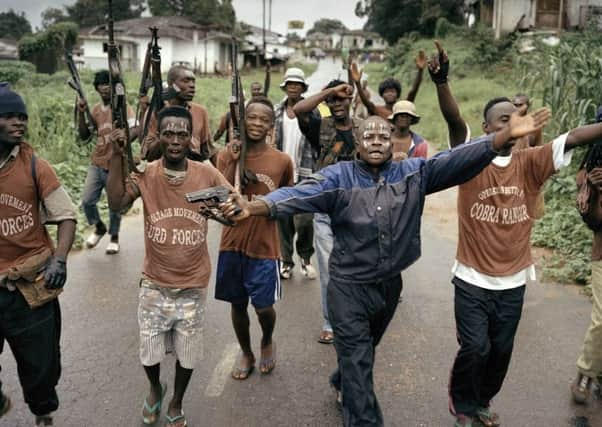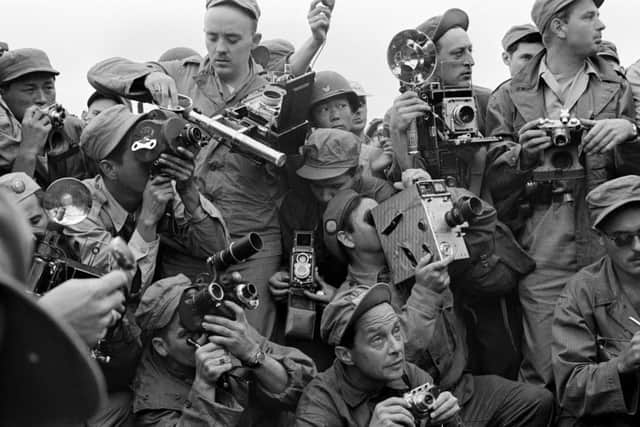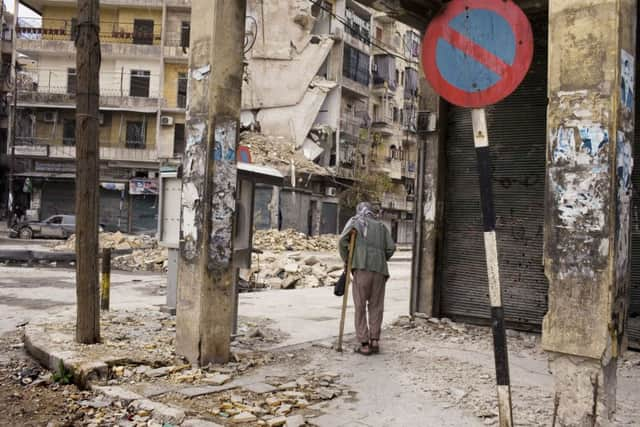Armed with just a camera


The photographs are among 50 drawn from the extensive Magnum Photos archive for a new exhibition which aims to highlight both the art of war photography and the very real impact of conflict on ordinary people.
“As we are all too aware war – and in particular – civil war is nothing new,” says Doncaster’s Michael Constantine, who is now manager of the new National Civil War Centre, which is staging the exhibition. “The technology may have changed, but actually war has always been about propaganda and photography has always been a big part of that.
Advertisement
Hide AdAdvertisement
Hide Ad“The images that we have included in the exhibition range from the 1930s to the present day and some of them are startlingly similar. The people in these images may be separated by both decades and geography, but they share an equal sense of horror about the plight of their people and their country.”


The £5.4m National Civil War Centre opened its doors two months ago with the aim of telling the story of the bitter conflict which raged from 1642 to 1651. Right from its inception, those behind the new attraction were determined to focus on the everyday experience, the “human” stories of the war – in which Yorkshire, of course, played a key role, crucially, the 1644 Battle of Marston Moor, the scene of a crushing Royalist defeat and generally reckoned to be the largest battle ever fought on English soil.
“The aim of the centre has always been to bring the Civil War to life. We never wanted this to be just a museum of odd-shaped hats and I hope an exhibition like this really helps to bring the message home,” says Michael, who previously helped run Brodsworth Hall, near Doncaster, and York Chocolate Story.
“There is a tendency to think that in these days of social media that news of war spreads faster than it ever has before. That’s true, but the need to get information into the public domain has always been a high priority. In the English Civil War, it took just three days for news that Charles I had surrendered to Scottish troops allied to the Roundheads at Newark to hit the newspapers. Remember, this was a time before even the telegraph – news was carried back to London by a horseman, but those on both sides were well aware as to how important it was to have good media coverage. That’s one thing that has definitely not changed.
Advertisement
Hide AdAdvertisement
Hide Ad“There is one particularly striking image from the Spanish civil war taken in Madrid as civilians are seemingly pointing to the sky as their city is bombed by Fascist forces. Initially in at the start of any conflict, there is a naivety and an excitement about what is happening. It’s those moments before the true horror of what his happening becomes clear.


“Another powerful image comes from Greece where civil war broke out in 1959 following the end of the Second World War. There are no men in it at all, just women and children, because the male population had been decimated. There were simply no men around.”
The exhibition features the work of some legendary war photographers like Thomas Dworzak, who was born in Germany in 1972 and grew up in a small town in the Bavarian Forest. Those peaceful early years would stand as sharp contrast to his many years as a war photographer as he travelled throughout Europe and the Middle East capturing the fall-out of war in the former Yugoslavia. Following the 9/11 attacks he spent several months in Afghanistan, which resulted in a photographic collection called Taliban, and during the Arab Spring he wielded his camera in Tunisia, Libya and Egypt.
There are also a number of images by Robert Capa, who set up the Magnum agency in 1947. Three years earlier he had captured the horrors of Omaha Beach on D-Day and he went onto assemble a powerful collection of images from modern civil wars, including Spain, Korea and Syria.
Advertisement
Hide AdAdvertisement
Hide Ad“At first glance it may seem odd to host this kind of prestigious exhibition in a museum largely dedicated to the 17th century British Civil Wars,” adds Michael. “But together they tell a story about how war has been reported over the decades and it also allows us to show how the use of images to manipulate opinion is nothing new.
“Today we have photos, but 400 years ago the engravings and cartoons which were widely circulated were even more powerful. Also the violence and bitter legacies of civil wars have not altered. Anyone viewing this exhibition will look at the 17th century exhibits in a new light. It is a powerful and thought-provoking show and really captures what war means for ordinary people who find themselves caught up in extraordinary circumstances.”
The exhibition runs at the Georgian rooms of the National Civil War Centre in Newark to November 5. For more details call 01636 655765 or visit www.nationalcivilwarcentre.co.uk